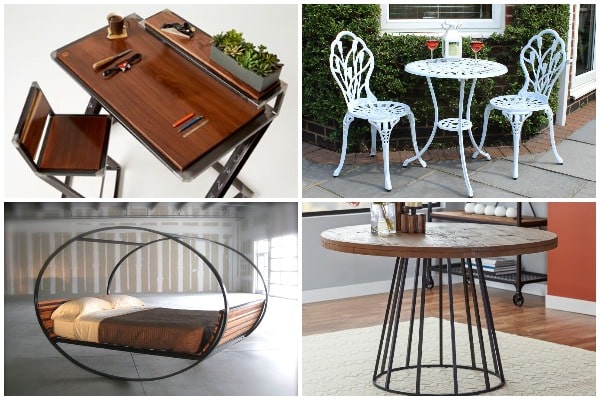Many reasons would make you want to store your furniture long-term. These include when you’re moving across a country and still looking for a home in your new location, when you’re renovating your home, or you need to create space in your home. Whatever the case, your best option is to store your furniture in a storage unit.
However, you’ll need to prepare the furniture for storage to protect it from damage. This is because furniture can easily be destroyed by humidity, moisture, and temperature fluctuations if not stored properly. If you need help with preparing your furniture for storage, below are essential tips for long-term furniture storage.

Choose The Right Storage Unit
The first step in preparing your furniture for storage is choosing the right storage unit that suits your needs. For instance, when looking for the best storage units in Onehunga, Auckland, you should consider storage size, safety, and affordability.
This is because you don’t want to prepare your furniture for storage only to realize it can’t fit in your storage unit. Still, you don’t want to choose a storage unit you cannot pay for or one that’s of poor quality.
Choose the storage unit depending on the size and amount of your furniture. A quick guide for this is writing down all the furniture you want to store, then estimating the space it can occupy and comparing this with the storage unit’s space.
Clean Your Furniture
Before storing your furniture, you need to clean it thoroughly to remove dirt and dust. Cleaning your items before storage also helps reduce dirt, grime, and other residues that could cause stains on your furniture. Since you’re storing your furniture long-term, the stains may be impossible to clean off when you finally need to take it out.
Moreover, cleaning helps remove mold, rust, and mildew, which can spread and cause damage to your furniture if not removed. Basic cleaning entails using a soft dry cloth to remove dust, dirt, and other residues from the furniture’s surface.
The exact method you’ll use to clean your furniture will vary depending on its type. For instance, for wood furniture, you can use a gentle cleaner and a soft cloth to wipe it down. Afterward, take a clean, dry cloth and thoroughly wipe the piece. Once the wood furniture is clean and dry, apply a layer of wood polish to preserve the finish.
For metal furniture, use a sponge, water, and mild, non-detergent soap for cleaning. You can also use steel wool to remove rust, which can worsen if neglected. Avoid using abrasive cleaners on metal furniture, as they can damage the finish, thus exposing the metal to rust-inducing moisture.
For fabric and leather furniture, vacuum it first and then use a color-safe cleaner to clean it. Ensure the furniture is completely dry before storage to prevent mold and mildew growth.
Dismantle Large Items
Before packing your large furniture for storage, consider disassembling it to maximize space in your storage unit. Dismantling also prevents furniture damage because gradual pressure can cause breakage along the joints.
Dismantling items also makes it easy to move the furniture into the storage unit, especially if you move the items alone. You don’t have to dismantle the entire furniture; you can dismantle things like table legs, drawers, or bed rails and frames to make it safer to store your furniture.
To make things easy, put screws and other small parts in a plastic bag. Then, use a marker pen to label the bag and tape it to the furniture. This way, when assembling your furniture in the future, you’ll know which part goes where and you won’t miss any parts.
Wrap And Protect Your Furniture
A crucial step of storing furniture for a long period is covering it to ensure it stays in good condition. This helps prevent furniture damage and stains caused by dust, grime, and other debris. However, the covering material should be breathable to prevent mildew growth.
Cover fragile items such as ceramic lamps or glass tables with a layer of paper and cushion them using bubble wrap. However, avoid wrapping them too tightly as the bubble wrap can trap moisture, leading to mold and mildew growth.
Use drop cloths, sheets, or blankets made from natural fabric for wood and metal furniture. But you should wrap the furniture loosely to allow air circulation. Furthermore, you can take extra precautions by applying a wood polish to wood furniture to prevent it from cracking and drying out. Also, polish your metal furniture to prevent rust.
Also Read: 6 IKEA Alex Drawer Alternative – The Perfect Solution for Small Spaces
Pack Your Furniture Correctly
The final step after wrapping your furniture is organizing it carefully and strategically in the storage unit. Keep the furniture on pallets to protect it from moisture and allow air to circulate.
Don’t stack items on top of your furniture to prevent warping, and ensure to leave enough space between items to avoid trapping humidity, which can cause mold growth. Also, create an aisle in the storage unit for easy access when you need the items.
Conclusion
Preparing your furniture for long-term storage can be a daunting task. Fortunately, this post has guided you through the process to ensure your furniture stays in good condition.